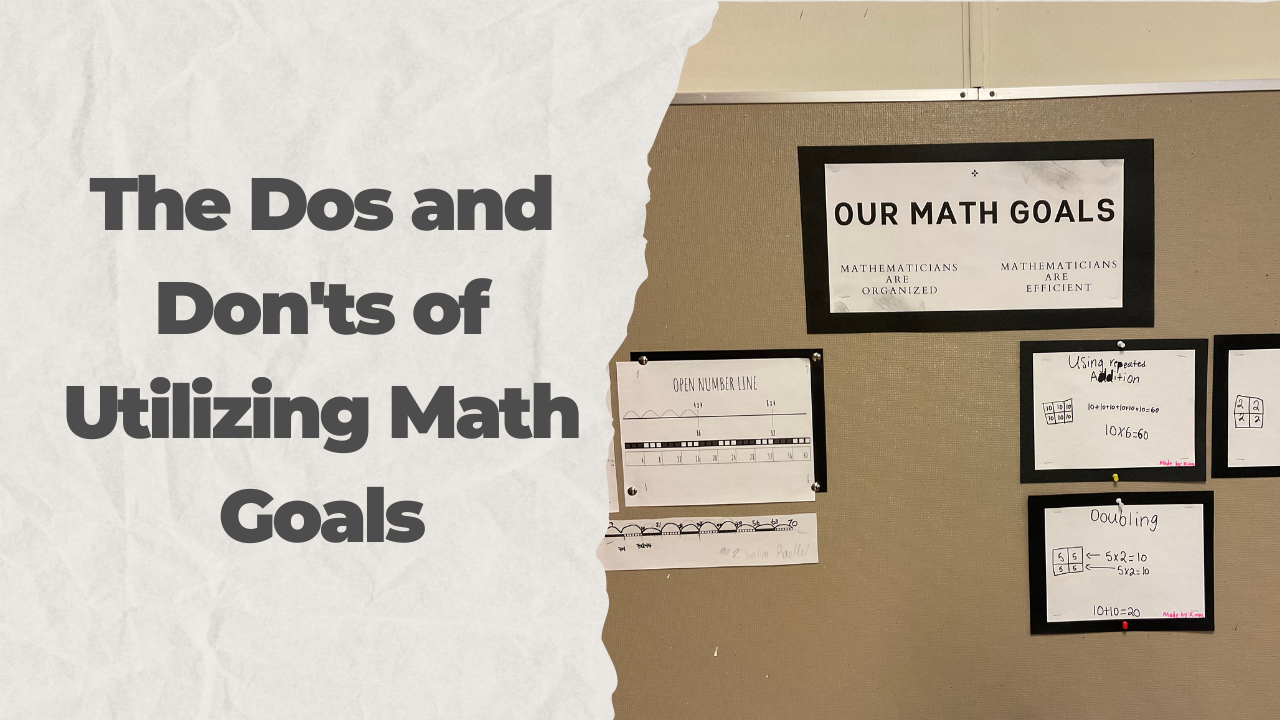The Dos and Don'ts of Utilizing Math Goals
Oct 17, 2023
Math is more than numbers and equations; it's a journey of exploration and understanding. Discover some of my essential guidelines for using math goals to enrich your children’s mathematical experience.
Do:
- Create Visual Representations: Make math goals visually accessible to children. Visual aids enhance understanding and retention. You can do this by having the children create visuals for your goals, as you discover new strategies, or take photos of the strategies in action.
- Employ Math Goal Language: Integrate the language of math goals into your math lessons. Consistent usage reinforces their importance. Notice and name the children’s efficiency and organization in action. Celebrate and highlight it often.
- Extend Beyond Math: Incorporate math goal language outside the math block. For instance, celebrate organizational skills in everyday contexts like a tidy coat room contributing to efficient winter wear preparation. Invite the children to find something in their home to organize (their clothes, their toys, the kitchen utensils). How will they organize it? How does that contribute to the use of the items? Inviting parents alongside the journey of math goals is a great way to strengthen the home-school connection and mathematical thinking.
- Gradual Integration: Slowly introduce new ideas into the math goals, allowing them to evolve and adapt as children's mathematical thinking deepens. Allow the children to explore and experiment with new strategies a few times before you introduce it as a strategy on the wall. Wonder with the children “Will that strategy always work?” “Is it something we want to add to our goals? Why or why not?” Engaging in these conversations fosters increased agency among the children.
Don't:
- Avoid the 'Ladder' Approach: Refrain from using math goals as a rigid ladder of development. Understand that children will naturally gravitate toward different goals at various times, influenced by their development and the specific problem context. Thinking of multiplication, one day they might use doubling and another, based on context they might use repeated addition.
- Have One Target Goal for All Learners: Do not expect that all children will reach or consistently use a particular math goal. Recognize that each child's mathematical journey is unique.
- Avoid Imposing Goals: Do not force children to adhere to specific goals. Math goals should remain accessible to everyone, providing an entry point for even the most emergent learners.
- Resist Overloading: Do not display all the math goals simultaneously. They are not a static list of strategies. Instead, they should evolve and expand as they are co-discovered through purposeful problem strings and investigations.
Navigating the world of math goals becomes more effective when we adhere to these practical guidelines. By making math goals visually engaging, using their language consistently, and allowing flexibility in their application, we can create a math-rich environment where each child's unique mathematical journey is celebrated and supported.





